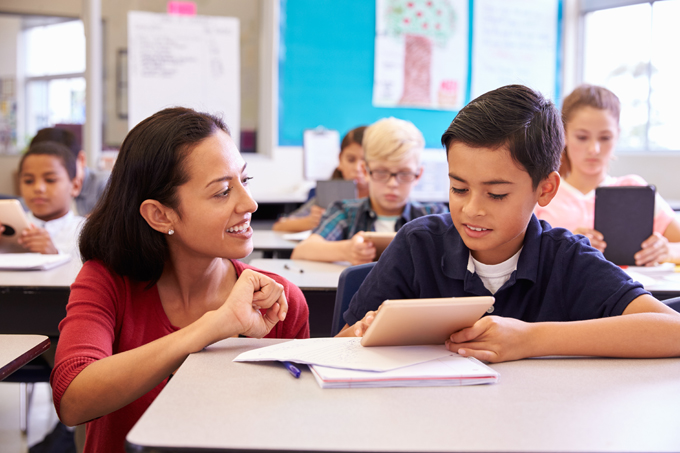 “Wait, bring it closer! We need to see if we can hear the caterpillar walking on the wall!”
“Wait, bring it closer! We need to see if we can hear the caterpillar walking on the wall!”
As the first grader called his fourth-grade buddy carrying the iPad to the brick wall of the school’s exterior, I chuckled to myself both with surprise and delight.
Following a series of read-alouds and grade-level activities focused on sound, noise, silence, and listening in their respective classrooms, the two boys were exploring the sounds of their school community by recording them on an iPad. Their recordings were in response to a prompt which asked “What sounds are most important for a new student or visitor to hear to understand our school community?” This prompt was tied to the class activities the boys had completed within their individual homerooms as well as the ideas they had brainstormed together the previous day.
Broadly, the boys’ teachers and I were interested in considering how children hear in the space of the school. As others have discussed, the current era is one wherein listening is more individualized than ever. This is in part due to the proliferation of smartphones and tablets as personal sound systems that many children and adults carry in their pockets. Thus, the teachers and I were curious how hearing takes shape in their public elementary school, one of the few public spaces in which access to such devices is limited.
The two boys were actively attuned to the world around them while also attempting to use the map of community sounds they had previously created. For example, neither boy had mentioned a caterpillar when they discussed the prompt beforehand, but, by attending to visual cues, the boys were able to hear the sounds of their school community in new ways. At the same time, the boys also worked together to record sounds they had anticipated. In one instance, the fourth-grade boy glided across the zip-line-esque track on the playground while his friend recorded the act.
The two boys I mention here were not only attuning to the world as they could recall it, but also to the variability they experienced as students each day. The boys were quite nuanced in their listening and recording; they attended to the sounds of the water fountain as water flowed from the spout and to the hum of the motor that ensured the water arrived cool to each patron.
The sounds the boys listened to and for were also often sounds that my adult ears could never have expected. For instance, while in the gym, the boys insisted their peers run around them, squeaking their shoes. Other children’s recordings were marked in similar ways—they recorded “big” sounds, such as the flush of the classroom’s individual toilet, as well as “small" sounds, such as the brushing of eraser remains from a desk or the tapping of a peer’s pencil. For myself—a former elementary teacher and now as a researcher—many of the sounds the children noticed were not necessarily the immediate sounds I would call to mind when I think about schooling. Children’s ears are, in many ways, better equipped to hear the sounds of their communities than adults—some of the sounds that we hear as noise help form a child's understanding of community.
Through the varied read-alouds and activities the teachers facilitated, the children’s vocabulary for discussing and describing sounds grew. But, it was only through the recording and playback of sounds on the iPad that children could amplify the sounds they wished for others to hear. Through this activity, the children were encouraged to focus on process rather than an end product. Likewise, children were positioned as experts of the school—a role that is sometimes hard for children to access in everyday elementary classrooms.
For their teachers and for me, the children’s attuning to sounds, such as the caterpillar’s slow and steady walk within the school community, encouraged us to open our ears—and our minds—in new ways. As a team, we talked about persistent sounds in the classroom that we had not noticed until the children called them to our attention, such as the seemingly quiet hum of the interactive whiteboard. In this way, the adventure of watching 25 pairs of children bound across the schoolyard and weaving through its halls with iPads in hand, was a listening experience we won’t soon forget.
Cassie J. Brownell is an assistant professor at the Ontario Institute for Studies in Education within the University of Toronto and the 2017 recipient of the Helen M. Robinson Dissertation Grant.
This article is part of a series from the International Literacy Association Technology in Literacy Education Special Interest Group (TILE-SIG).